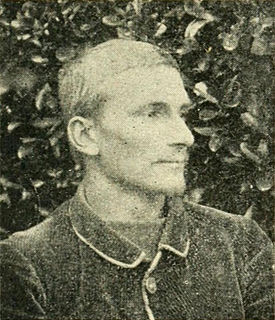
Adriaen Isenbrandt or Adriaen Ysenbrandt was a Northern Renaissance painter. Documentary evidence suggests he was a significant artist of his period, even though no specific works by his hand are clearly documented. Art historians have conjectured that he operated a large workshop specializing in religious subjects and devotional paintings, which were executed in a conservative style in the tradition of Early Netherlandish painting. He was believed by Georges Hulin de Loo to be the same person as the anonymous Master of the Seven Sorrows of the Virgin or Pseudo-Mostaert. Other art historians doubt that any works can be reliably attributed to him, and the number of paintings attributed to him by major museums has been in decline for many decades.

Jean Hey, now generally identified with the artist formerly known as the Master of Moulins, was an Early Netherlandish painter working in France and the Duchy of Burgundy, and associated with the court of the Dukes of Bourbon.
Michel Laclotte is an art historian and museum director, specialising in 14th and 15th century French painting.

René-Paul Schützenberger was a French Post-Impressionist painter.

Pieter Claeissens the Elder or Pieter Claeissens (I) (1500–1576) was a Flemish painter of history paintings, portraits and allegorical scenes. He was the first prominent artist in an extended family of artists from Bruges.

Georges Hulin de Loo was a Belgian art historian specialising in Early Netherlandish art. He was educated in his home city of Ghent where he attended high school and university, earning a Ph.D from the Faculty of Arts in 1883, and a degree in law three years later. He then traveled to Germany and Paris to continue his studies, returning to Ghent in 1889 to take up a teaching position the University of Ghent in a variety of subjects such as logic and law.

Henri Marie Bruno Joseph Léon, Baron Kervyn De Lettenhove (1856-1928) was a Belgian lawyer and amateur architect and art historian.

Amédée Ernest Lynen (1852–1938), who often signed his works Am. Lynen, was a Belgian painter, illustrator and writer. In 1880, he was one of the founders of the artistic group L'Essor after it had separated from the academy, and he co-founded its successor Pour l'Art in 1892. In 1895, he founded the "Compagnie du Diable-au-corps", an artistic association which organised evenings with theatre and poetry, and which existed at least until 1899. It also published a satirical newspaper, Le Diable au Corps. In 1903, two works on paper were bought by the Royal Museums of Fine Arts of Belgium. In 1930, a retrospective of his works was organised by the Cercle Artistique et Littéraire in the Vauxhall, Brussels.

Isabella or Isabelle Alice Errera, née Goldschmidt was a Belgian art historian specializing in textiles.

William Henry James Weale was a British art historian who lived and worked most of his life in Bruges and was one of the first to research the Early Netherlandish painting extensively. He was also a pioneer in the study of early bookbinding, and a staunch promoter of Gothic Revival architecture.

The Three Marys at the Tomb is a c. 1410–26 panel painting usually attributed to Hubert van Eyck, now in the Museum Boijmans Van Beuningen, Rotterdam. The painting was included at the seminal Exposition des primitifs flamands à Bruges in 1902.

Cornelia Cnoop or Cnopp was a Netherlandish miniature painter. A painting attributed to her hand was exhibited in 1902 in Bruges during the Exposition des primitifs flamands à Bruges, in the Provinciaal Hof as catalog number 130.

The Diptych of an elderly couple is a pair of bust-length wedding portraits by Hans Memling, which were formerly attached with pegs and were split some time before they were sold separately in 1894. One is in the collection of the Gemäldegalerie and the other is in the collection of the Louvre. When viewed side-by-side the landscape background joins up to form a whole.

Jan van Eeckele or Van Eekele or Van Heckele was an Early Netherlandish painter active in Bruges.

Ten Duinen Abbey or the Abbey of the Dunes was a Cistercian monastery at Koksijde in what is now Belgium. It was one of the richest and most influential religious institutions in the medieval County of Flanders. It later relocated to the city of Bruges.

Hippolyte Gevaert or Fierens-Gevaert was a Belgian art historian, philosopher, art critic, singer and writer.
Antoine Philippe De Schryver (1924–2005) was a Belgian art historian and professor at the University of Ghent, where he lectured on History of Book Illumination. He was specialized in the field of illuminated manuscripts in the Southern Netherlands, 15th century painting, and artists at the Burgundian Court.

Gillis Claeissens or Egidius Claeissens was a Flemish painter of portraits and altarpieces and a member of a prominent family of artists originating in Bruges. It has only been possible to distinguish Gillis Claeissens' work from that of his father and siblings after scholars discovered a contract with the artist for the painting of a tryptich. It was further discovered in 2015 that he artist can be identified with the Monogrammist G.E.C. These discoveries have allowed to recognise Gillis Claeissens as an important portraitist alongside Pieter Pourbus in 16th century Bruges.

Portrait of Tommaso Portinari by Hans Memling is held by the Metropolitan Museum of Art, New York City. It was made c.1470 in oil on oak panel, and measures 44.1 by 33.7 centimetres. The painting and Memling's Portrait of Maria Portinari form the wings from a since dismantled triptych; the central panel is believed to have been a now lost deception of the Madonna and Child; perhaps Memling's Virgin and Child in the National Gallery, London.





















